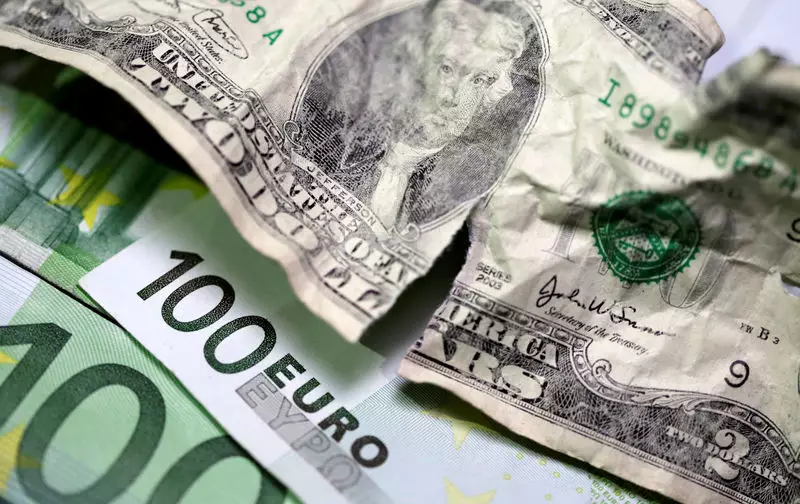In the wake of marked volatility in the currency markets, the US dollar has once again asserted its strength, rebounding after sustained losses that characterized the end of last week. As of early Monday, the Dollar Index, which gauges the performance of the greenback against a selection of six prominent currencies, has climbed approximately 0.4% to 107.750. This follows a notable drop from its two-year peak, indicating the inherent fluctuations that often accompany reactions to economic indicators.
This rebound appears to be closely tied to recent data on inflation—a critical factor influencing Federal Reserve policies. Specific readings from the Fed’s favored inflation gauge pointed toward moderate price increases, resulting in decreased apprehension about the pace of potential interest rate cuts expected in the near future. Interestingly, despite this positive movement for the dollar, market expectations remain cautious, with speculations suggesting that any easing in rates may now be pushed to June 2025, reflecting a careful approach to economic forecasting.
Across the Atlantic, the euro has witnessed a slight decline, influenced by comments from the European Central Bank’s (ECB) President Christine Lagarde. With the euro trading lower against the dollar, this reaction underscores how market sentiment is easily swayed by central bank communications. Lagarde asserted in an interview that the eurozone is “very close” to achieving the ECB’s medium-term inflation target of 2%. While this outlook may sound positive, it also hints at a cautious readiness to adjust monetary policy in response to evolving economic conditions.
The ECB’s recent decision to lower interest rates for the fourth time this year demonstrates a proactive stance against inflation, yet it also raises questions about the overall health of the eurozone economy. If inflation continues to trend downward, more rate cuts may be on the horizon for 2025. Thus, market participants are closely monitoring developments, as any significant changes in monetary policy will have widespread implications for the euro’s valuation.
Meanwhile, the British pound has remained rather stagnant, with GBP/USD trading flat at around 1.2571. Recent data revealing that the UK economy failed to grow in the third quarter has heightened concerns about a potential economic slowdown. The Office for National Statistics revised GDP growth estimates downwards, which could affect the currency’s performance in the coming weeks. Additionally, the Bank of England’s decision to maintain current interest rates amidst a divided policymaker sentiment signals a cautious approach that reflects current economic uncertainties.
The implications of stagnant growth and fluctuating market sentiment are significant for the pound’s trajectory moving forward. Given the prevailing concerns about inflation and economic stability, it will be essential for the Bank of England to navigate these challenges adeptly to restore investor confidence.
In the Asian markets, the dollar’s strength is further accentuated by the performance against the Japanese yen and the Chinese yuan. The USD/JPY pair saw a slight increase to 156.72 after a previous surge, reacting significantly to signals from the Bank of Japan (BOJ) regarding future interest rate policies. The BOJ has indicated a reluctance to hike rates in the near term, even with an uptick in inflation, potentially extending the period before any adjustments to monetary policy.
Similarly, the yuan has faced downward pressure, trading at a one-year peak against the dollar. Concerns persist over China’s economic outlook, despite expectations that increased fiscal spending might stimulate growth. However, with anticipated looser monetary conditions, these factors could undermine the yuan’s stability, contributing to a precarious situation in the broader Asian currency market.
Overall, the currency markets are currently experiencing shifts driven by diverse economic indicators and central bank communications. The US dollar’s recent performance emphasizes the complexities of inflationary dynamics, while developments in the eurozone and UK highlight the interconnectedness of global economies. As traders continue to assess these evolving trends, the future landscape of currency trading will undoubtedly remain intricate—demanding astute observation and strategic decision-making from market participants.

